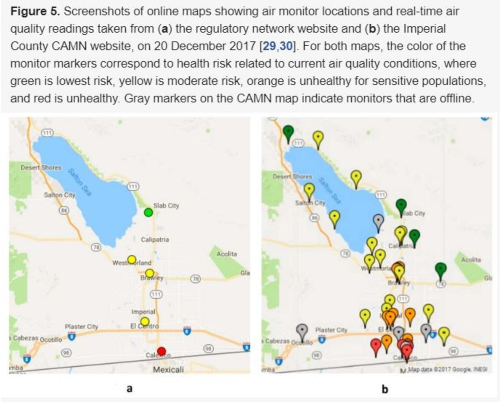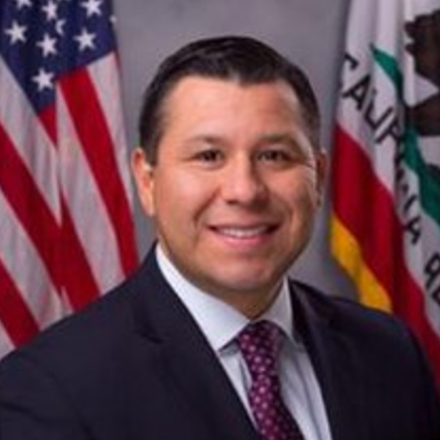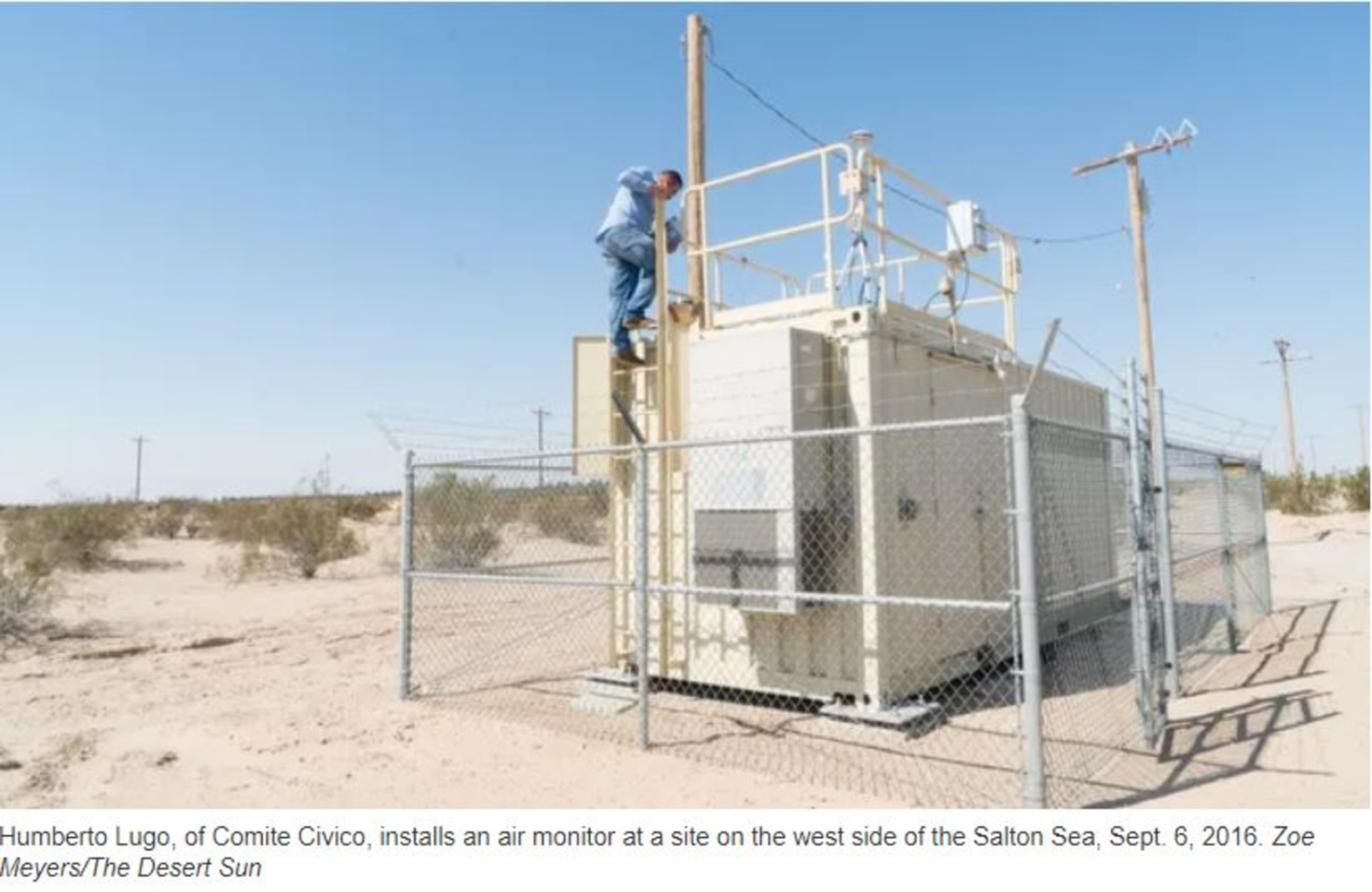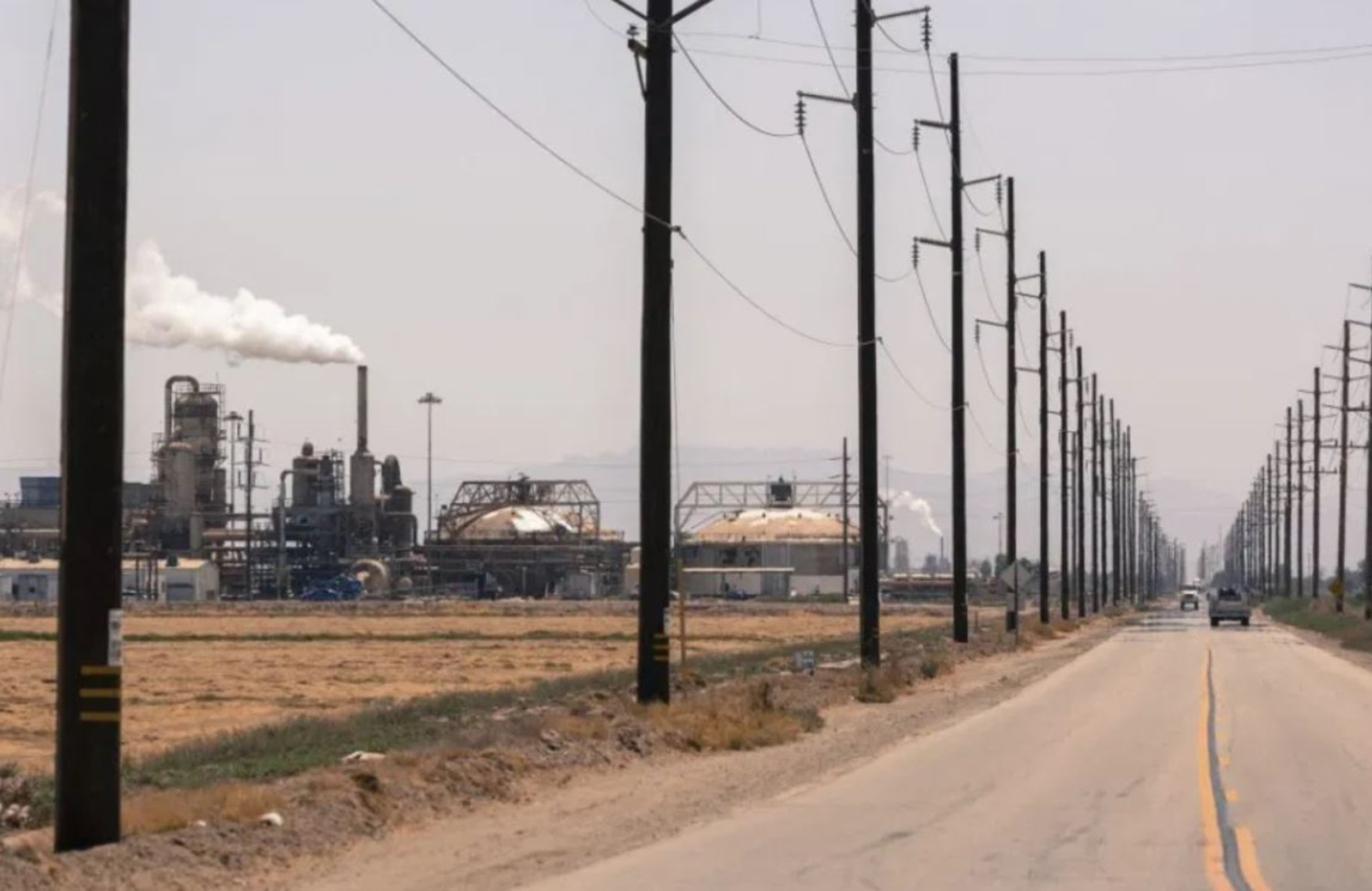Working With Imperial County Communities to Monitor Air Quality
Program
-
Focus Areas
Data, Technology & Innovation, Environmental Health, Healthy Communities -
Issues
Asthma, Climate Change, Wildfires & Extreme Heat

In 2015, when the Public Health Institute’s Tracking California (formerly the California Environmental Health Tracking Program) worked with community members in California’s Imperial County to monitor air pollution in the community, they expected to find a serious air pollution threat. Even so, their findings sent ripples that continue to reverberate for cleaner air across California.
For decades the air quality in the predominantly Latino Imperial County had exceeded state and federal safety standards, and as a result the area had the highest rate of asthma-related hospitalizations and emergency room visits for children in the state. Yet state regulators had just five air quality monitors to assess the air pollution problem in the 4,000 square mile county.
Working with the local community organization Comité Cívico del Valle and researchers from the University of Washington, Tracking California helped establish a community air monitoring network (CAMN) of forty low-cost, community managed air monitors across the county. While some community air monitoring equipment produces results that are difficult to compare to state data, the Tracking California project calibrates and validates data against regulatory monitors to produce more accurate data.

Soon after the local air monitoring began, the community project noticed rare but troubling differences with the state’s air monitoring: on two occasions, the community monitors showed high pollution spikes that were almost twice as high as the level the state was finding at the same time. An investigation of the disparity revealed that the the state’s air monitors were capped at a lower level and thus could only register pollution up to a level that was well below the actual levels, meaning that the state could have been under-reporting such occasional high pollution spikes for years. Following the revelations, the state adjusted its equipment in this area to reflect the real-world air quality problems.
In addition, the community monitoring showed that the state’s monitors had likely been missing many pollution events for years: in the first five months of the network’s operation, the community monitors detected 1,426 high air pollution episodes — more than twelve times as many as the state system detected.
Further, when the state’s monitors did detect an air quality problem, 90% of the time only a single monitor was triggered, suggesting that the problem was small and localized. By contrast, episodes detected by the community air monitors were observed by at least 5 monitors 68% of the time, suggesting that poor air quality was often occurring in more areas than the state system was finding.
“This new information, brought to light through a scientifically-rigorous, community-designed air monitoring network, means residents in the Imperial Valley are better equipped to engage with the government and to advocate for better air policy and ultimately, better air.” Michelle Wong, Tracking California.
Following the initial project, Comité Cívico del Valle (CCV) took ownership of the air monitoring network, and community residents are now trained in operating and maintaining the equipment. CCV also led an extensive campaign to publicize the network, presenting information during community events, meetings with school and other local officials, and conducting interviews with news media. Their work showed that Tracking California’s community-based approach helped increase local health literacy, capacity and knowledge about air quality, data interpretation, and health impacts. As one community member noted:
“[The project] has empowered me more by being able to express and defend our actions with good quality information. For example, we were able to identify areas where air quality was worse and then able to identify why and where it was coming from.”
Ultimately, the air monitoring project’s findings were so striking that the state air board approached CCV to learn how to create similar networks in other communities with severe air pollution problems. The project model also informed implementation of two state legislative measures (AB 617 and AB 134): the former created a California Community Air Protection Program, a $250 million annual effort to reduce toxic exposures in communities most at risk from air pollution, and the latter institutionalized the community air monitoring approach and provided up to $5 million for technical assistance grants to community organizations.

AB 617 was modeled on the highly successful Imperial County Community Air Monitoring Network, which has demonstrated that empowering communities with the ability to monitor local air pollution can lead to key policy victories and improve public health.California Assembly member Eduardo Garcia, co-author of AB 617
You can follow the air monitoring in real time on the Imperial Valley Air Network (IVAN) website. Also, see a May 2020 publication reviewing the Imperial County air monitoring project here.
See the press release from the project website launch and see below for media coverage of the project.
Media Coverage
Work With Us
You change the world. We do the rest. Explore fiscal sponsorship at PHI.
Support Us
Together, we can accelerate our response to public health’s most critical issues.
Find Employment
Begin your career at the Public Health Institute.



